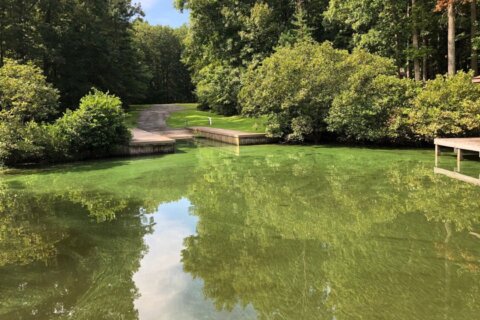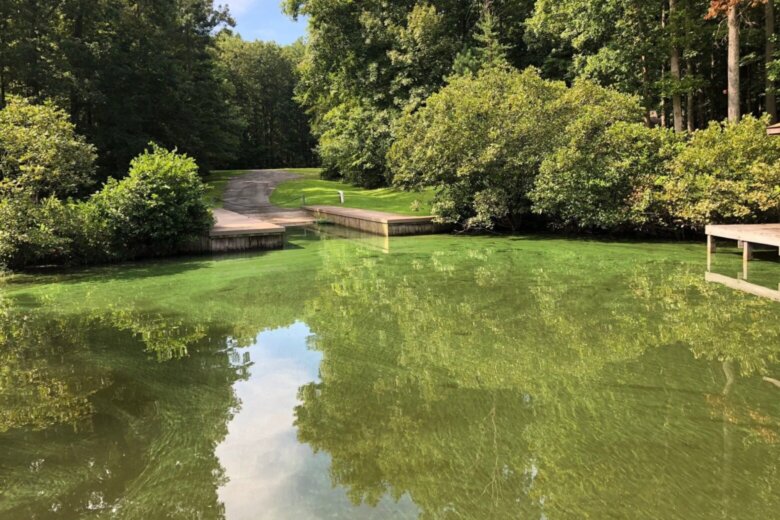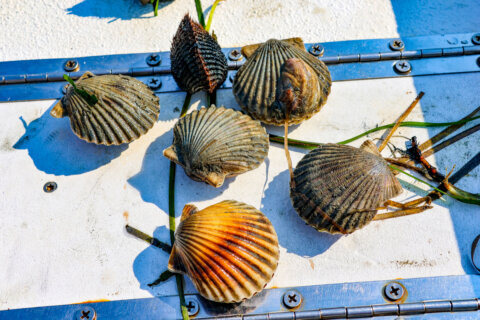
WASHINGTON — A harmful algae bloom has caused the Virginia Department of Health (VDH) to designate several “no-swimming” advisories and other warnings for areas of Lake Anna to prevent illness.
Algae blooms can occur when warm water and nutrients combine to make conditions favorable for algae growth, according to the VDH.
These conditions have occurred recently, particularly excessive rain — causing nutrient-runoff from the land that can trigger algae blooms in natural waters.
The VDH advises that surface scums that are green or blueish-green should be avoided, as they are more likely to contain toxins. These scums are most likely to occur in coves, shallow areas, or along the shoreline.
Samples of the water that were previously collected on Sept. 5 were again collected on Sept 25. The health department then updated their advisories to include the following areas:
“No-swimming advisory” areas:
Potentially harmful algae species detected in eight areas are at levels that present a moderate to high risk for human health effects. Coves, shallow areas, and shorelines in these areas are likely to have scum present. The public should avoid swimming in these areas:
- Upper Pamunkey Branch east of Rt. 522 bridge
- Upper-Middle Pamunkey Branch at Simms Point/Harris Lane
- Lower-Middle Pamunkey Branch at Rt. 719 “Dillard’s Bridge”
- Lower Pamunkey Branch at Lake Anna State Park Beach
- Upper North Anna Branch near Gold mine Creek and “the Sandbar”
- Middle North Anna Branch at Rt. 719 Bridge
- Lower North Anna Branch near Rose Valley Island
- Fisherman’s Cove
“Harmful algae detected. Be aware of blooms” in these areas:
Potentially harmful algae species in two areas are at levels that present a low to moderate risk for human health effects. VDH is notifying the public of a bloom in these areas, but current levels do not warrant a “no swimming” advisory. VDH says to avoid contact with the water if scums appear on the water in these areas:
- Upper-Middle North Anna Branch at Rt. 522 Bridge
- Christopher Creek Branch north of Rt. 522 Bridge
See where in Virginia tests for harmful algae came back positive:
The VDH states that most algae species are harmless. However, some species of cyanobacteria (also known as blue-green algae) may produce irritating compounds or toxins.
Some symptoms of cyanobacteria exposure include skin rash and gastrointestinal illnesses, such as upset stomach, nausea, vomiting and diarrhea. All samples on Sept. 25 were screened for two toxins, and results were all below levels that may pose a health risk.
To report scum sightings, the VDH asks Virginians to complete the online Harmful Algae Bloom report and include a picture.
The VDH said that properly-cleaned fish fillets, cooked to proper temperature, are considered safe to eat if the fish is skinned and internal organs are discarded.
To prevent illness, people should:
- Avoid contact with any area of the lake where there is scum or an advisory sign is posted.
- Do not allow children or pets to drink from natural bodies of water.
- Keep children and pets out of areas experiencing a harmful algal bloom and quickly wash them off with fresh water after coming into contact with algae.
- If you or your animals experience symptoms after swimming in or near an algal bloom, seek medical/veterinarian care.
- Suspected HAB-related health-related effects following exposure to a bloom, may be reported to the Virginia Harmful Algal Bloom Hotline at 1-888-238-6154. Do not report health effect to the online HAB report form.









